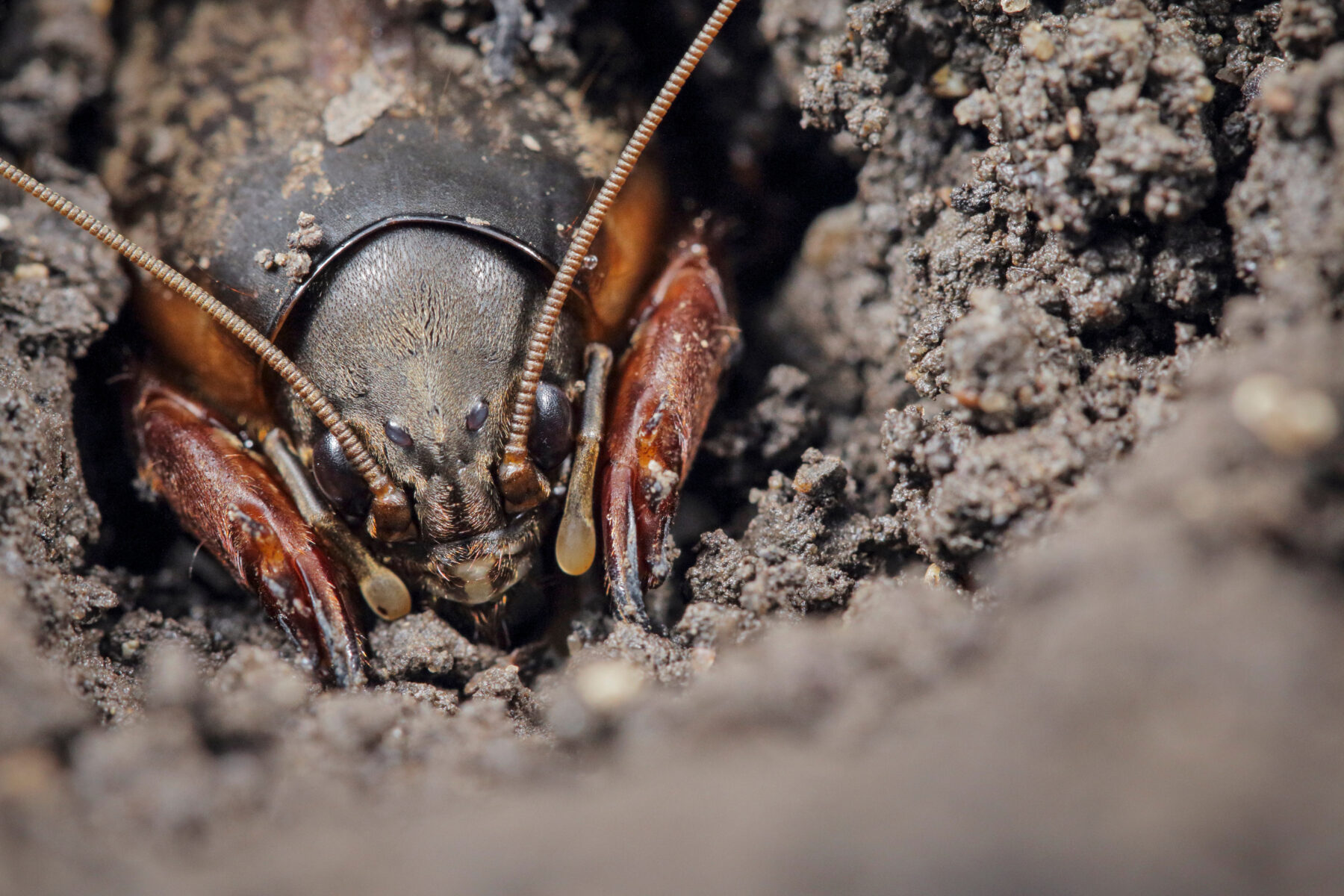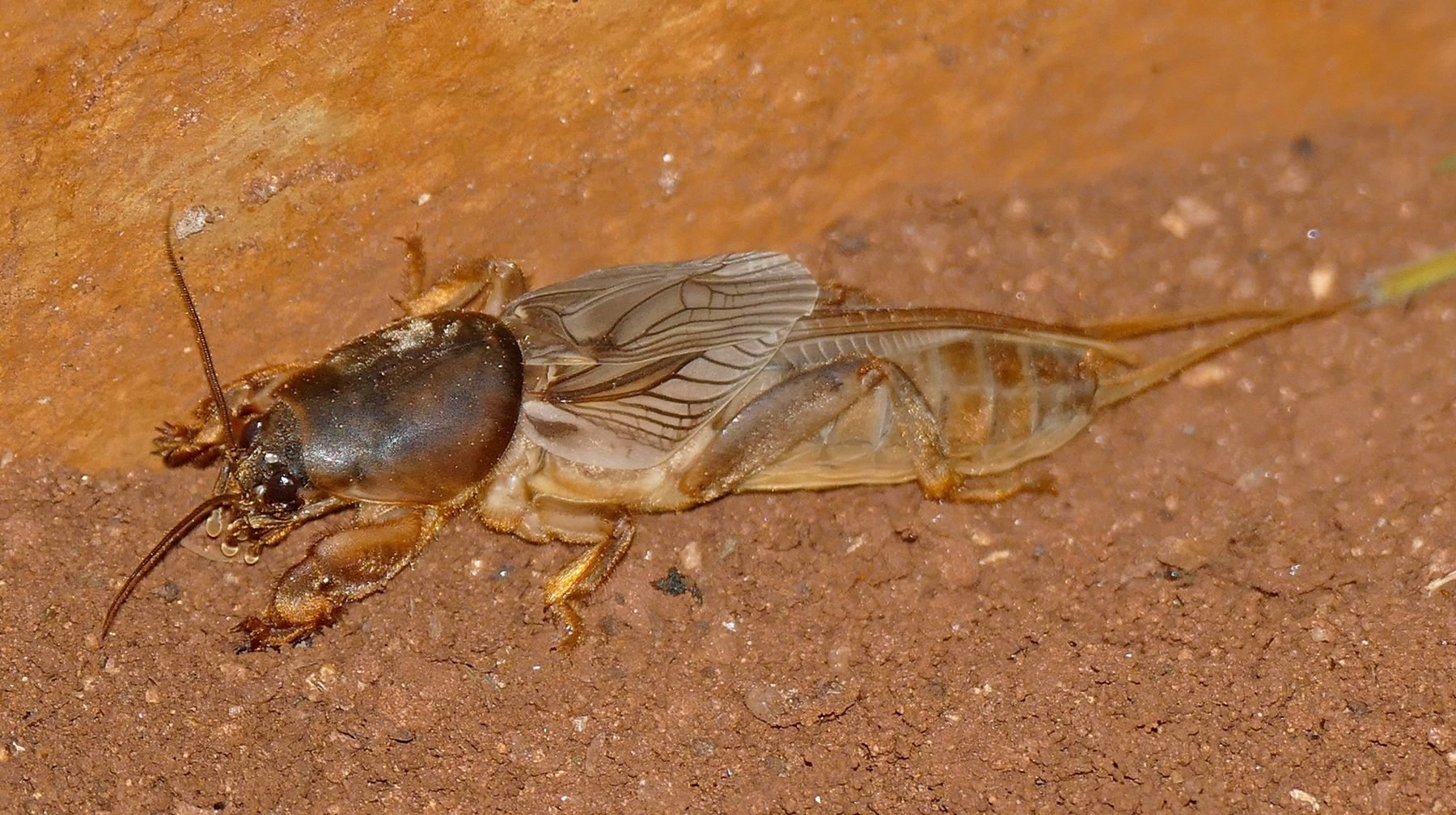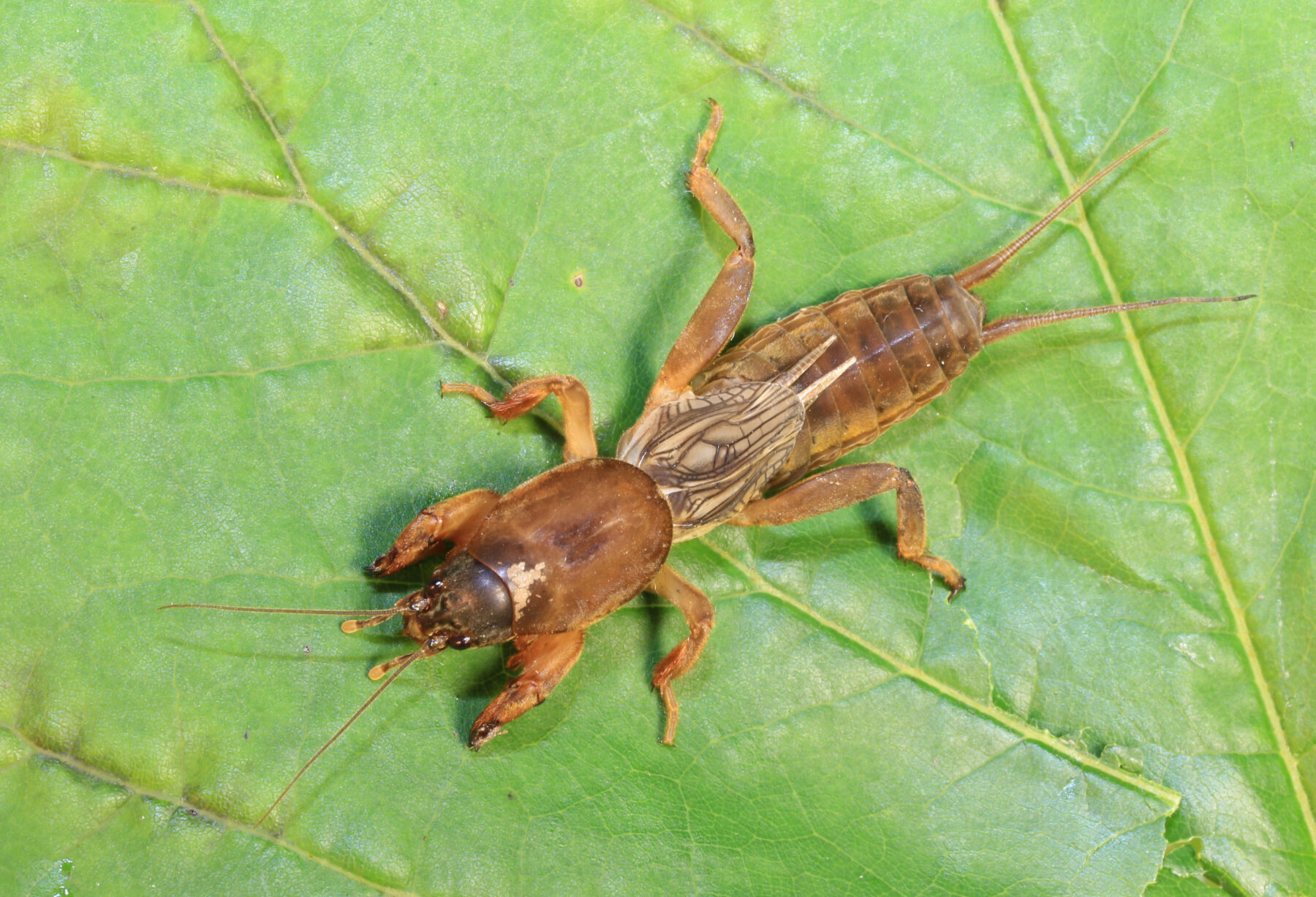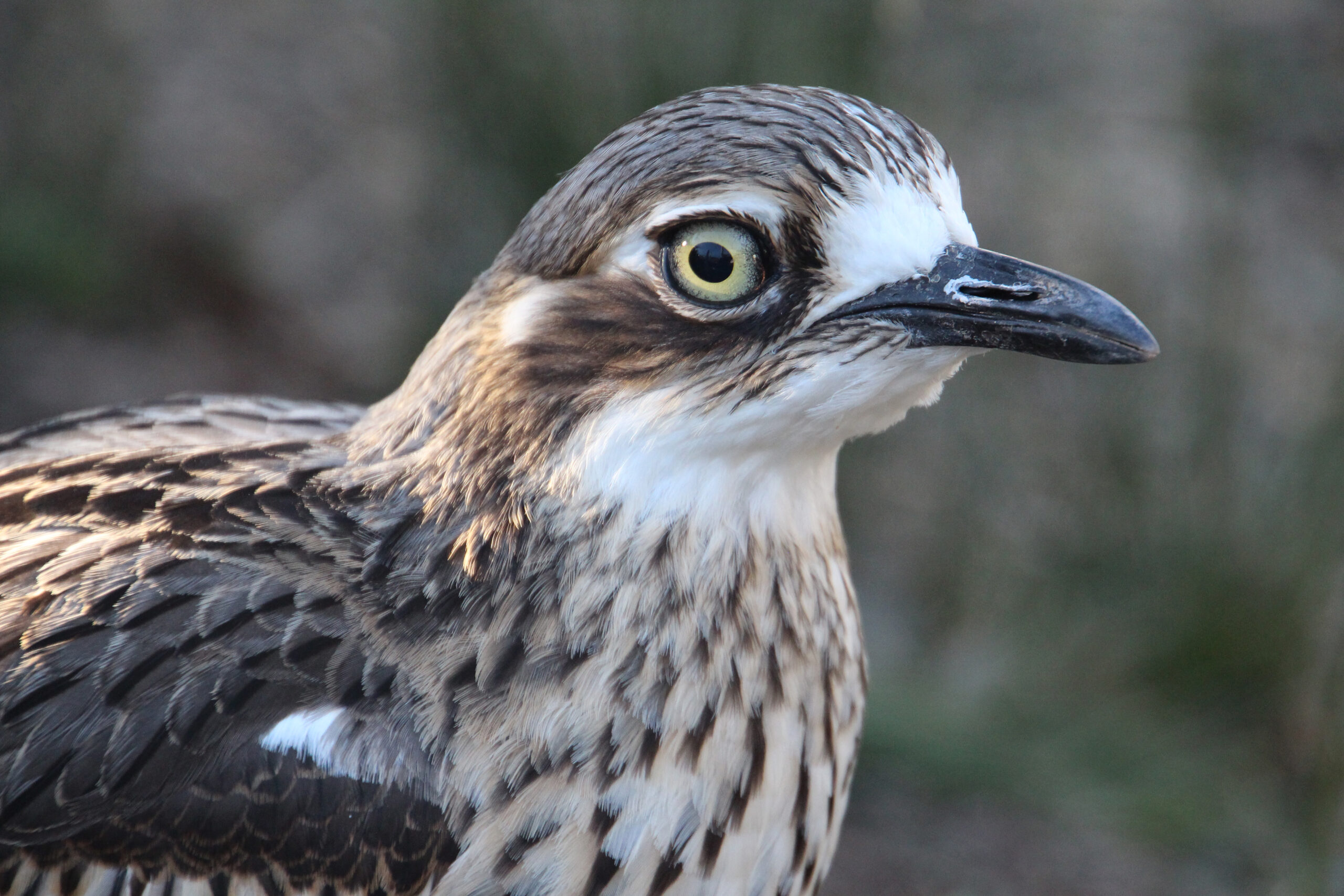| Common name | Mole cricket |
| Scientific name | Gryllotalpa (genus) |
| Type | Insect |
| Diet | Plant roots, worms, beetle larvae |
| Average lifespan | Potentially longer than two years, depending on the species |
| Size | Adult 30–40mm long |
That loud continuous chirping you might hear emanating from beneath the ground in your backyard or local park during summer evenings comes from male mole crickets. They don’t fly like other crickets but instead live permanently underground in complex burrows that they create by digging with their strong front limbs.
They sit at the entrance of these burrows and face inwards, using them like echo chambers to amplify their calls to attract females, which are strong fliers. After mating, the females stay underground to lay their eggs in special sections of the burrows and, in an unusually maternalistic act for insects, guard them from predators until they hatch.


G. pluvialis is a native Australian species that occurs naturally along the east coast, most noticeably around Sydney and Brisbane. G. australis, another species native to Australia’s east coast, has a more southerly distribution and is often heard in Melbourne and Tasmanian gardens. Since at least the 1990s both have also been been heard in gardens around Perth, where it’s thought they may have been introduced in fresh garden products brought in from the country’s east.
Australia also has several introduced species of Gryllotalpa that have become pests. Because they eat plant roots, they are capable of causing severe damage to garden lawns. But not all species are strict herbivores. Many are omnivores that also prey on underground worms and beetle larvae.

Mole crickets are related to grasshoppers and locusts, as well as regular crickets that live above ground. And, just like these leaping and hopping relatives, they produce their sound through stridulation – by rubbing a row of ‘teeth’ on one wing across a ridge (known as a scraper) on the other.





